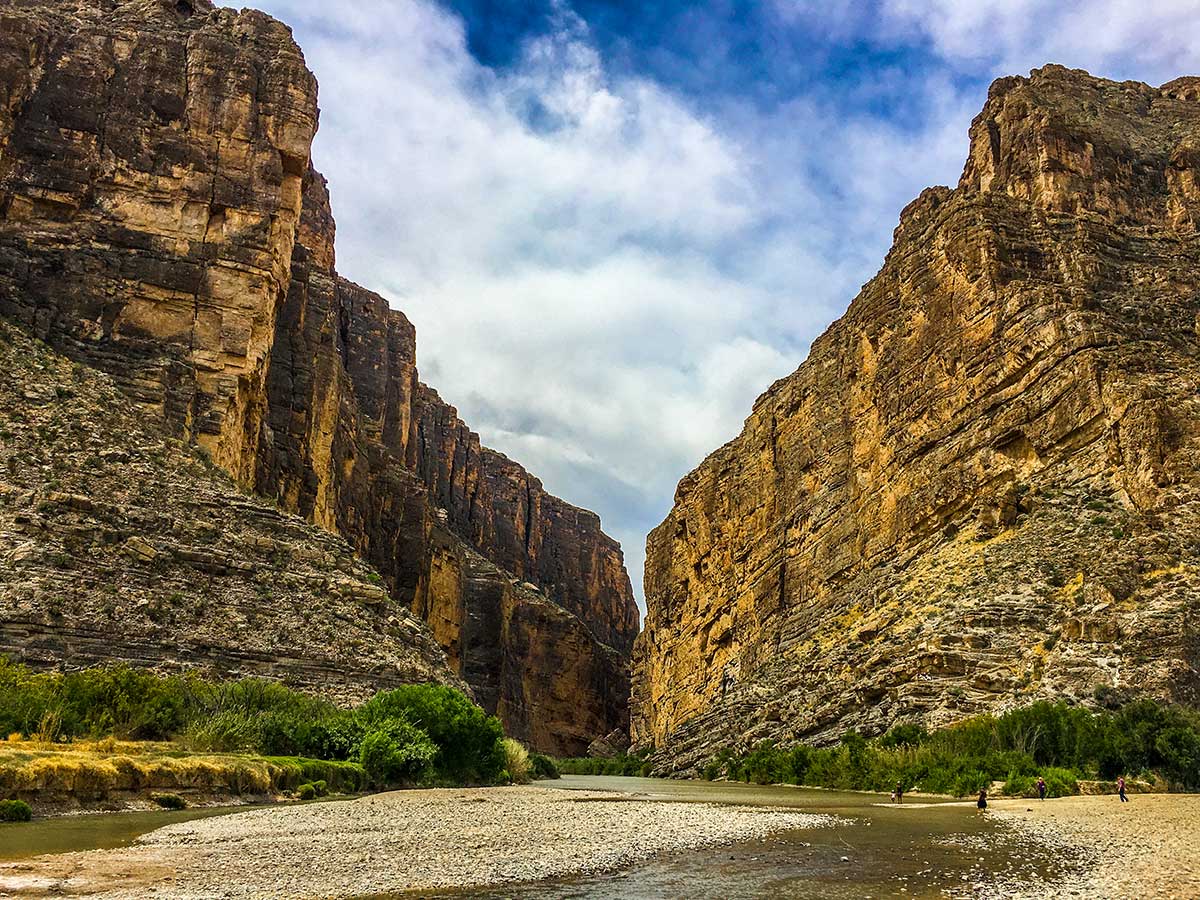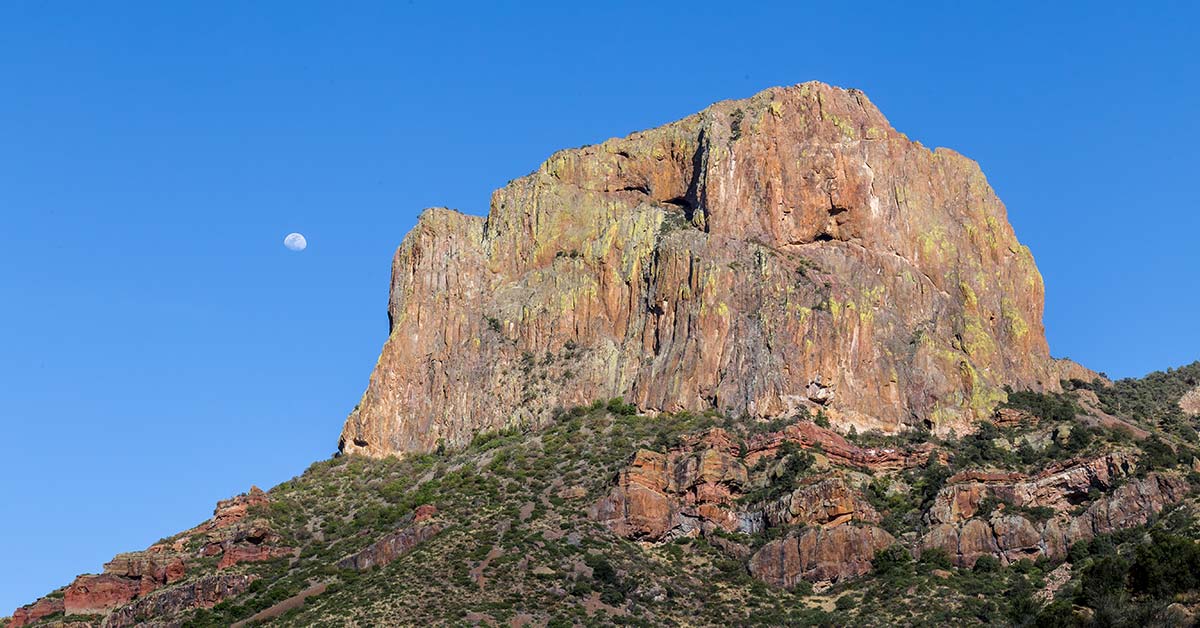Big Bend National Park offers nearly limitless opportunities for scenic driving, hiking, camping, backpacking, mountain biking, horseback riding, bird watching, wildlife observation, and stargazing. Additionally, the Rio Grande borders the park for 118 miles providing options for half-day floats to extended excursion by raft, canoe, or kayak.
My name is Rob Decker and I'm a photographer and graphic artist with a single great passion for America's National Parks! I've been to 51 of our 61 National Parks — and Big Bend is one well worth the visit. I have explored many areas of the park — so I'm ready to help! So if this is your first time to the park, or your returning after many years, here are some of the best things to do in Big Bend National Park!
Scenic Drives

100 miles of paved roads and 150 miles of dirt roads connect the desert to the mountains and the river and offer exceptional ways to explore the park by vehicle. Here are the top five scenic drives — on paved roads!
Chisos Basin Road – 6 miles
A drive to the Chisos Basin is an excellent way to experience the transition between arid desert and cooler mountain habitats. As this scenic, winding road rises over two thousand feet above the desert floor, it offers breath-taking vistas of the mountain peaks and the erosion-formed basin area. The Chisos Basin has a visitor center, campground, lodge, restaurant, camp store, and access to miles of hiking trails.
Ross Maxwell Scenic Drive – 30 miles
A trip along the Ross Maxwell Scenic Drive highlights the geologic splendor Big Bend is famous for, and offers many scenic overlooks and exhibits along the way. Sotol Vista, Mule Ears Overlook, and Tuff Canyon are all worthwhile stops. Continue the drive to the magnificent Santa Elena Canyon, where limestone cliffs rise 1,500′ above the Rio Grande. A short trail leads into the canyon
Panther Junction to Rio Grande Village – 21 miles
The drive to Rio Grande Village traverses ancient limestone and has marvelous vistas across the river to the magnificent Sierra del Carmen escarpment. In twenty miles, the road descends nearly two thousand feet. There are several worthwhile stops and highlights along the way. Dugout Wells includes a desert nature trail and a shady oasis, nice for picnicking and birding. A soak in the Historic Hot Springs is also a popular activity.
Persimmon Gap to Panther Junction – 28 miles
This road connects the north entrance to park headquarters at Panther Junction. From Persimmon Gap, the road descends a long, gentle, gravel slope to Tornillo creek and Tornillo Flat. The Rosillos Mountains rise to the west; to the east the Dead Horse Mountains dominate the skyline.
Maverick Entrance Station to Panther Junction – 23 miles
This drive, through striking desert scenery, has excellent views of the surrounding mountains. Several roadside exhibits describe wildlife that might be seen along the drive. Junctions for the Chisos Basin road and Ross Maxwell Scenic Drive are located along this route.
Hiking
Day Hikes
Big Bend is a hiker's paradise containing the largest expanse of roadless public lands in Texas. More than 150 miles of trails offer opportunities for day hikes or backpacking trips.
Desert Hikes

The Chihuahuan Desert covers about 80% of the park and surrounds the Chisos Mountains. Bare, rocky ground and sparse vegetation are hallmarks of the desert, but there is plenty of life here. Look for termite nests along plant stems, exoskeletons of millipedes, animal scat, and rodent and reptile tunnels. Bird life is plentiful, especially in the morning; look for nests hidden in yuccas and cacti. In the spring, bluebonnets, paintbrush, bi-color mustard, desert marigold, yucca, ocotillo, and cacti blossoms add color to the desert landscape.
Mountain Hikes
The Chisos Mountains contain some of the most rewarding day hikes in Big Bend, especially during the summer months when it is too hot to hike at lower elevations in the park. It is not uncommon to see tracks and scat of black bear, mountain lions, and gray fox along Chisos Mountains trails. Carmen Mountain white-tailed deer, rock squirrels, whiptail lizards, spotted towhees, tufted titmice, and Mexican jays are also common in these mountains.
River Hikes
The Rio Grande creates a distinct environment in Big Bend National Park. Countless bird species can be found in the riverbank vegetation. The river provides water for many desert animals; look along the muddy shoreline for tracks, signs, and scat.
Backpacking
Backpacking in the Desert
The most remote areas of Big Bend National Park are best left to experienced backpackers. Each year, park rangers respond to desert emergencies when hikers are not prepared for the heat and extreme conditions of the desert. Due to the complex topography and vague trails/routes, a topographic map and a compass/gps are necessary for some hikes. Not for novices, you will need to be fully equipped and physically prepared to pack your gear and water into the desert and camp primitively.
River Trips

Floating the Rio Grande
Big Bend offers a variety of river adventures. Enjoy a day trip, or plan an extended float through spectacular limestone canyons. If you have the time and a spirit of adventure, you may want to consider a river trip. Seeing the park's canyons from the middle of the Rio Grande can be an incredible experience. There are many possibilities including half-day floats or multi-day excursions. Floating the Rio Grande can take you through miles of canyons up to 1,500 feet deep, where the sunlight may reach the bottom only briefly on winter days. As in other parts of the park, your ears may tell you more than your eyes. Listen for beavers crawling through the brush;you might catch a glimpse as one slides down the riverbank into the water. Turtles, especially red-eared sliders, often sun themselves on rocks and logs just above the waterline. Great blue herons and green kingfishers are just some of the many birds you may see flying along the river.
Bicycling
Lightly traveled roads and varied terrain make Big Bend a premier bicycling location. Over 100 miles of paved roads and 150 miles of backcountry dirt roads provide challenges for riders of all types and abilities. Bicyclists must be extremely cautious and well-prepared, but bicycling allows outstanding panoramic views unobstructed by a windshield. It also allows the bicyclist to see and hear some of the smaller wonders of Big Bend from a more intimate viewpoint.
Bird Watching
Big Bend's position near the 100th meridian in the middle of the continent and along a migration route makes the park ideal for bird diversity throughout the year. Northern species migrate here for the warm winter climate, while birds from the tropics range this far north to breed in the spring. One of Big Bend's highlights, the Colima warbler, is a predominantly Mexican species that only nests in the United States in the Chisos Mountains from April to September.
Fishing
Sometimes visiting a National Park can seem as though time is not on your side and the pace of “have to see everything” takes over. Perhaps fishing, which might seem unusual in a desert park, could be just what the “ranger” ordered. This activity is less harried, relaxing, and most of all, edible. Fishing the Rio Grande is something that is fun for visitors of all ages. And best of all it's free, and requires no Texas fishing license. All that is required is a fishing permit which may be obtained at any open visitor center. So if a lazy day by the Rio Grande is something you might enjoy, ask a ranger about fishing opportunities here in the park
Stargazing

On the clearest nights, more than 2,500 stars are visible to the naked eye! Big Bend is known as one of the outstanding places in North America for stargazing. In fact, it has the least light pollution of any other National Park unit in the lower 48 states. One factor that makes this possible is simply the sparse human occupation of this region.
I've created a WPA-style poster for Big Bend National Park to celebrate the 75th Anniversary!

Click here to see the Big Bend National Park poster.
Rob Decker is a photographer and graphic artist who had the rare privilege of studying under Ansel Adams in Yosemite National Park when he was just 19 years old. Now, Rob is on a journey to explore and photograph all 61 of America's National Parks. He's creating WPA-style posters to help people celebrate their own national park adventures — as well as encourage others to get out and explore!
Source: https://national-park-posters.com/blogs/national-park-posters/best-things-to-do-in-big-bend-national-park
